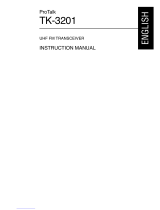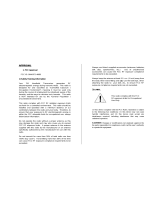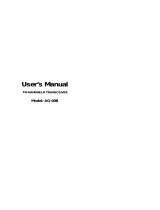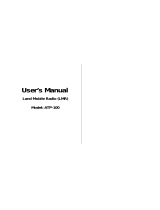
i
THANK YOU
We are grateful you have chosen Kenwood for your land
mobile radio applications.
This instruction manual covers only the basic operations of your
NEXEDGE portable radio. Ask your dealer for information on any
customized features they may have added to your radio.
NXDN™
NXDN™ is a protocol name for a new digital communications
system using 4-level FSK technology which has been
co-developed by Kenwood and Icom.
NOTICES TO THE USER
X Government law prohibits the operation of unlicensed radio
transmitters within the territories under government control.
X ,OOHJDORSHUDWLRQLVSXQLVKDEOHE\ÀQHDQGRULPSULVRQPHQW
X 5HIHUVHUYLFHWRTXDOLÀHGWHFKQLFLDQVRQO\
Safety: It is important that the operator is aware of and
understands hazards common to the operation of any
transceiver.
The AMBE+2
TM
voice coding Technology embodied in this product
is protected by intellectual property rights including patent rights,
copyrights and trade secrets of Digital Voice Systems, Inc. This
voice coding Technology is licensed solely for use within this
Communications Equipment. The user of this Technology is
explicitly prohibited from attempting to extract, remove, decompile,
reverse engineer, or disassemble the Object Code, or in any other
way convert the Object Code into a human-readable form. U.S.
Patent Nos. #5,870,405, #5,826,222, #5,754,974, #5,701,390,
#5,715,365, #5,649,050, #5,630,011, #5,581,656, #5,517,511,
#5,491,772, #5,247,579, #5,226,084 and #5,195,166.























